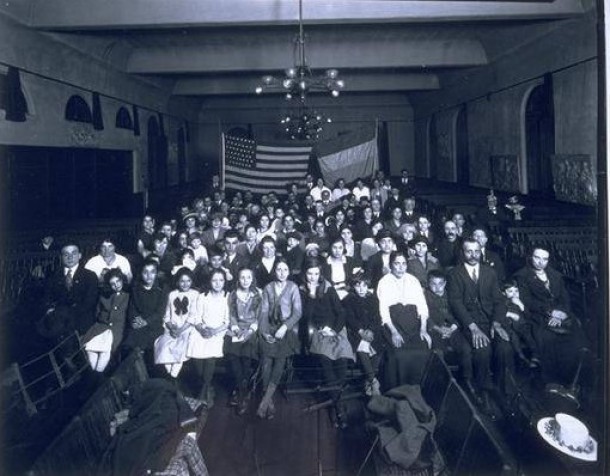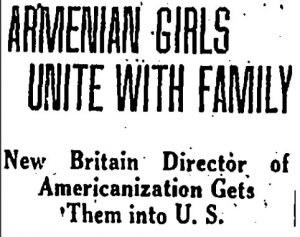By Nancy Finlay
New Britain’s first Armenian immigrants appear to have been young men looking for work in the city’s factories. They first arrived about 1890, and a few years later, over one hundred Armenian men were living and working in New Britain. Over the next century, they built an active community that still thrives today.
Why Immigrate to Connecticut?
In many ways, New Britain’s Armenians were like other immigrants who flooded Connecticut’s cities in the late 19th century. Some dreamed of earning enough money to return home, buy property, and establish businesses. Others planned to remain in the United States, hoping one day to send for the families that they left behind.
In addition to the desire for new opportunities, Armenian immigration was also a product of discrimination and violence in their homelands. At the turn of the 19th century, the Ottoman Empire controlled the Armenians’ ancestral lands (what is today eastern Turkey and Armenia). The Turkish rulers regarded the Armenian minority as second-class citizens as the Armenians were ethnically distinct and Christians living in an Islamic state.
In the fall of 1894, accounts of brutal massacres of Armenians began appearing in American newspapers. Harper’s Weekly published illustrations showing Armenians being killed in the streets of Constantinople (today Istanbul). At least one young man employed by New Britain’s Stanley Works went back to try to rescue his wife and children and bring them to Connecticut. Others attended meetings to protest the massacres, signed petitions, and gathered to commemorate those killed. One young man gave $5—in memory of his parents who had died in the massacres—to a fund to build a hospital in New Britain. Other Armenians joined in to raise the total to $35. The Hartford Courant noted the extraordinary generosity of these contributions, which came from factory workers who earned no more than $1 per day.
Building an Armenian Community in New Britain
By the early 1900s, New Britain had a flourishing Armenian community. Some Armenian women and children had joined their husbands, and while many men continued to work at Stanley Works and other local factories, some pursued other occupations. Moses Mousesian and his son Charles were among the first Armenians to arrive in New Britain. The 1900 Census still listed Charles as a key maker, but Moses’s occupation was a carpenter. In addition, they had been joined by Moses’s wife Mary and their younger son Jacob—both of whom arrived in 1898.
Mousesian family in the 1900 US Census – United States Census, 1900, Family Search (Click to enlarge)
Other Armenians opened barbershops, grocery stores, a meat market, and restaurants, including Agmian Satiag’s Armenian Coffee House. Most of these businesses were clustered within the blocks around Lafayette Street, North Street, Main Street, and Lee Street. John Bagdigian’s farm, however, was on North Stanley Street, near the town line. The 1915 city directory also listed Armenian clerks, laborers, a tailor, and a shoemaker. Mary Mouradian, a woman doctor, established her practice in New Britain in 1913. She continued working as a physician and surgeon until shortly before her death in 1971, at the age of 83.

Description of Armenian man employed by Stanley Works returning to retrieve his wife and children in the Hartford Courant, Sept. 13, 1895 – Connecticut State Library
Although the Armenians would not have their own church building until 1925—when they established St. Stephen Armenian Church on Tremont Street—they conducted services at St. Mark’s Episcopal Church, perhaps as early as 1900. Some Armenians continued to return to their homeland, but many others became American citizens. When an Armenian Club was established in New Britain in 1905, 23 members were already citizens and ten more were in the process of becoming naturalized.
Even as they forged new lives as American citizens, New Britain’s Armenian Americans retained a strong ethnic identity. Many also maintained strong connections with their families in the Middle East, where conditions deteriorated following the outbreak of World War I. Today, evidence of Armenian immigration survives throughout New Britain—detailing the history of a community that continues to shape one of Connecticut’s most vibrant cities.
Nancy Finlay grew up in Manchester, Connecticut. She has a BA from Smith College and an MFA and PhD from Princeton University. From 1998 to 2015, she was Curator of Graphics at the Connecticut Historical Society.









